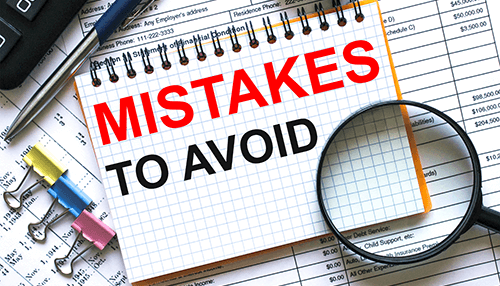- By TOP CHINA FREIGHT
- August 29, 2025
- Shipping
How to get a freight forwarder in China is a crucial step in today’s global economy, where businesses large and small rely on efficient logistics to stay competitive. With thousands of providers available, many importers struggle to find one that truly fits their needs. Choosing the wrong partner can lead to delays, hidden costs, and damaged customer trust. This expanded guide covers every critical step — with actionable strategies, expert tips, and real-world examples — to help you make informed decisions.

1.Clearly Define Your Shipping Requirements
Electronics, furniture, textiles, or hazardous goods require different expertise.
High-volume shippers may need long-term contracts, while smaller businesses might prefer flexible services.
Fast delivery calls for air or rail freight, while cost-conscious shipments favor sea freight.
Knowing your cost ceiling helps you compare offers more effectively.
2.Use Multiple Research Channels
To find the right partner, cast a wide net.
| Research Source | How It Helps |
|---|---|
| Online Platforms (Freightos, Flexport, Alibaba Logistics) | Instant quotes, service reviews, and performance ratings. |
| Trade Fairs (Canton Fair, CIFF) | Face-to-face meetings to discuss needs and build trust. |
| Supplier Referrals | Reliable recommendations based on proven experience. |
| Business Associations (FIATA, WCA) | Verified lists of licensed and professional forwarders. |
| Industry Forums | Peer feedback and problem-solving advice from other importers. |
A diversified approach ensures you don’t miss hidden gems and helps you verify reputation from multiple sources.
3.Verify Credentials and Compliance
A legitimate freight forwarder in China must meet certain standards. Check for:
1.Official Business Licenses
Verify their Chinese business registration.
2.NVOCC Certification
Required for handling sea freight at scale.
3.IATA Certification
Essential for air freight operations.
4.International Affiliations
Membership in WCA or FIATA often signals professionalism.
5.Insurance Coverage
To protect your cargo during transit.
Request to see these documents, and avoid companies unwilling to share verifiable credentials.
4.Compare Services and Value
Sea, air, rail, or multimodal combinations.
For businesses needing complete coverage from supplier to final destination.
Assistance with documentation, duties, and local regulations.
Platforms for real-time updates and reporting.
Coverage against theft, loss, or damage.
5.Leverage Technology to Simplify Processes
Digital-forwarders and tech-enabled providers are transforming the logistics landscape. Look for:
1.Instant Rate Comparison:
Save time by evaluating multiple carriers at once.
2.AI-Driven Route Optimization:
Find faster and cheaper routes.
3.24/7 Online Tracking:
Monitor your cargo anytime.
4.Integrated Document Management:
Simplify paperwork with centralized platforms.
Tech tools make your operations smoother and reduce the risk of human error.
6.Communicate Effectively
Strong communication ensures smooth operations.
1.Dedicated Account Managers:
Have a single point of contact to handle issues.
2.Clear SLAs (Service Level Agreements):
Define timelines, responsibilities, and penalties for delays.
3.Regular Updates:
Request consistent tracking reports for visibility.
4.Language Support:
Ensure staff can communicate effectively in English to avoid misunderstandings.
7.Negotiate Smarter Deals
Good negotiation saves money and builds better partnerships.
| Negotiation Strategy | Benefit |
|---|---|
| Commit to long-term contracts | Volume discounts and better service prioritization. |
| Bundle services (insurance, warehousing) | Lower overall costs. |
| Plan shipments in advance | Avoid peak-season surcharges. |
| Consolidate smaller shipments | Reduce per-unit costs through LCL consolidation. |
Pro Tip: Always compare at least three quotes before making a decision.
8.Test the Partnership First
Before committing to a long-term contract, start with a smaller shipment. This trial phase helps you evaluate:
- Accuracy of documentation
- Timeliness of delivery
- Responsiveness to inquiries
- Transparency of billing
If performance is consistent, you can confidently expand the relationship.
9.Build a Long-Term Relationship
Meet quarterly to discuss performance and adjust strategies.
Share constructive feedback for process improvement.
Collaborate to overcome port delays or carrier shortages.
Consistent partnerships often unlock better terms and faster service during peak times.
10.Avoid Common Mistakes

Many importers face avoidable problems when sourcing forwarders. Steer clear of these pitfalls:
- Choosing based only on the lowest price
- Failing to verify licenses or insurance
- Ignoring hidden fees in quotations
- Overlooking service quality for “cheap” offers
- Not testing with a small shipment first
11.Benefits of Choosing the Right Forwarder

A professional freight forwarder provides:
1.Seamless Customs Clearance:
Expertise in documentation and compliance.
2.Efficient Cost Management:
Optimized routes and carrier selection save money.
3.On-Time Delivery:
Meeting your supply chain deadlines consistently.
4.Risk Reduction:
Proper insurance and compliance minimize exposure.
5.Business Growth:
Reliable logistics free you to focus on scaling operations.
Conclusion
Learning how to get a freight forwarder in China isn’t just about finding the cheapest option — it’s about identifying a reliable, transparent, and experienced partner who aligns with your business goals. By defining your needs, verifying credentials, leveraging technology, and fostering strong communication, you can create a partnership that drives efficiency, reduces costs, and supports long-term growth.
Need a Shipping Quote?
If you want expert guidance and peace of mind, our team is ready to assist.
TJ China Freight offers tailored solutions to help businesses of all sizes ship more reliably from China.
FAQs
Q1:Can a forwarder handle quality inspections?
Yes, many forwarders partner with third-party inspection companies to ensure your cargo meets standards.
Q2:How can I avoid hidden costs?
Request a detailed quote with all surcharges and confirm there are no additional fees at the destination port.
Q3:Is it safe to work with digital-only forwarders?
Yes, as long as they have valid licenses, transparent terms, and reliable customer support.
Q4:What if a shipment goes wrong?
Document all issues, inform your forwarder immediately, and check your insurance policy for coverage.
Q5:How do I know if my forwarder is performing well?
Track KPIs like on-time delivery, damage rates, and responsiveness to evaluate service quality.
